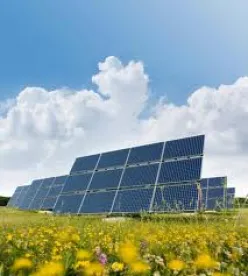This is the second of three articles on the Solar Industry and Forced Labor. Here we focus on interactions with solar module suppliers. Our first article in the series focused on regulations in this area, and our next will focus on investors and their requirements.
Your shipment of solar equipment is stopped by Customs at the U.S. border because of the potential use of forced labor in the product’s supply chain.
-
What help can your supplier provide in demonstrating the absence of forced labor?
-
Will your supplier certify that the equipment is free of forced labor?
-
What are the supplier’s obligations under your contracts?
-
-
Who will be responsible for the delay in supply?
-
What do your supply contracts say about delivery?
-
What is the recourse for delayed, returned or seized shipments?
-
-
What if your supplier offers you “clean” sourced solar modules, but you know they are also supplying modules using forced labor where it is legal elsewhere in the world?
-
How does that square with your company’s ESG policy?
-
Clean energy faces a messy problem.
Identifying and removing forced labor from a supply chain is a problem for solar module consumers – i.e., solar energy producers in the United States – and their suppliers. Both parties face the risks of having items delayed, rerouted, detained, or seized at the border, as well as the legal and reputational consequences of sourcing items made using forced labor.
Ideally, the suppliers and consumers would work together to fight the problem. However, because it affects them in different ways, they may be struggling internally to determine where the responsibilities lie for ridding the supply chains of forced labor.
-
Background (a recap of Article 1, so skip to section 2 if you’ve read our first article in this series)
As we reported here, the U.S. Government issued a Withhold Release Order (WRO) stating that any products believed to contain silica material produced by Hoshine Silicon Industry Co. and its subsidiaries should be held by Customs and Border Protection (CBP) and not released without evidence that the product’s supply chain was free of forced labor.
Hoshine Silica Industry Co. is a major supplier to the solar industry and is more or less ground zero for forced labor abuses. The solar industry relies on panels made from silicon. Hoshine is the world’s largest metallurgical-grade silicon producer.
Silicon can be made in a number of ways, but the most common steps are to mine quartz, crush and heat that material into metallurgic-grade silicon, then use chemical processing to make polycrystalline silicon. There is obviously more complexity to the system, but the purpose of the explanation above is to point out that a major source for the silica rock, as well as the coal needed for the heat processing, are both found in the mines and manufacturing facilities of Hoshine Silica Industry co. According to reports, those facilities are in the same industrial park as two Uighur internment camps in the Xinjiang Uighur Autonomous Region of China (the XUAR).
The solar industry recognizes the forced labor problem is real, is not going to go away on its own, and must be addressed head on.
-
The Current State of Supply
Four of the five largest suppliers of solar panels are headquartered in China and the fifth is heavily invested there. Many of the large Chinese solar module producers are vertically integrated so that they control their production from the polysilicon ingot right up to the module. It is very likely those suppliers have some visibility into the materials used in their production. However, to this point, they have not shown tremendous initiative in certifying their supply chains.
The suppliers have economic incentives to keep their input costs low, and not look too closely at why those inputs are so inexpensive. Additionally, the party line from the Chinese Government is that forced labor at Uighur camps does not exist. Further China has recently passed anti-sanctions measures worded so broadly that investigating forced labor in the supply chain may be considered prohibited support for U.S. extraterritorial measures.
Nevertheless, it is clear that the suppliers are aware that forced labor is an issue and that the problem is not going away. Many of them are pushing for new “change in law” and “change in costs” provisions in their contracts with solar module consumers to account for shocks to their logistics chains that they know are coming. We also understand that some suppliers are looking into whether there is a viable source of polysilicon, which could be substituted or at least developed, outside of the XUAR.
-
Possible Responses – Bifurcating Supply
We understand the idea has been floated in the industry that some suppliers may try to bifurcate their supply: sourcing one line of polysilicon from verifiable non-forced labor sources, and another line from unverified sources. Effectively, that would mean the same suppliers would be selling “clean polysilicon” and “dirty polysilicon.” That may resolve the immediate issue that unverifiable polysilicon may not enter the United States, but it seems unlikely that ESG-minded consumers, and their investors, would accept that solution long-term.
-
New CBP Requirements – Detailed Documentation
Meanwhile, U.S. Customs and Border Protection has issued FAQs and answers listing out what documents it may require to prove that the supply chain dose not include forced labor, and it is thorough. In order to rebut the presumption that an imported item contains silica sourced from Hoshine CBP may require the following:
-
The supplier must sign a special certificate of origin attesting to the sourcing of the products (sample language is provided in 19 C.F.R. §12.43)
-
The importer must also sign a statement that it has made every reasonable effort to ascertain the character of the labor used in the merchandise.
-
Along with those statements, CBP may require any or all of the following documents:
-
Affidavit from the provider of the silica and its initially processed forms (i.e., silicon metal, metallurgical grade silicon, chemical-grade silicon, silicon, etc.) and identification of the source of the silica and its initially processed forms that identifies where the silica and its initially processed forms were sourced;
-
Daily process reports that relate to the unprocessed silica and its initially processed forms sold to the downstream producer(s) and the list of entities that supplied inputs for the silica containing products being imported.
-
Transportation documents from raw silica source (quarry or other) through silica’s initially processed forms to the imported merchandise;
-
List of production steps and production records from the imported merchandise back through the supply chain to the unprocessed silica and its initially processed forms;
-
Purchase Orders, Invoices, and Proof of Payment for the silica and its initially processed forms and/or silica containing components;
-
If they are to comply with the requirements, suppliers will not be able to take half measures in investigating and documenting their polysilicon sources. So, in the event that CBP detains imports of solar panels or other silica-based products, importers will be well prepared to submit the above documentation to CBP and have their products expeditiously released by CBP.
-
Where That Leaves the Solar Industry
CBP’s expectation for importers in the solar industry is very high, and some importers may find themselves in a difficult position where they may be able to provide some, but not all of the documents outlined above. Importers should carefully assess their controls environment in light of the list outlined above, and analyze areas where it may need to enhance its controls, particularly related to documentation and certification requirements, to mitigate potential risks.
The hard line on supply verification from CBP may be useful for solar module consumers. It gives them a bright line rule to take to their suppliers and say, “this is the bar we need to clear to buy from you.” However, if the suppliers cannot meet that high standard, it may be up to the U.S. solar industry to find ways to support the suppliers in finding new sources – ones that all parties can be certain do not rely on forced labor.
In an upcoming article, we will continue our exploration of the forced labor issues facing the solar industry with respect to addressing the concerns of the investors that fuel the industry’s expansion in the United States and globally. In our last article, we looked at the U.S. regulations that are starting to apply pressure on solar industry to clean up its supply chains.




 />i
/>i

